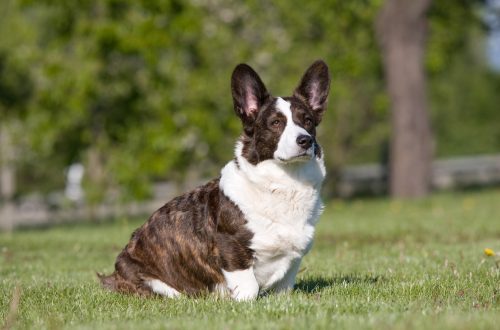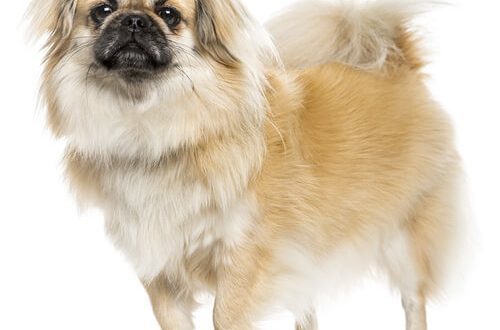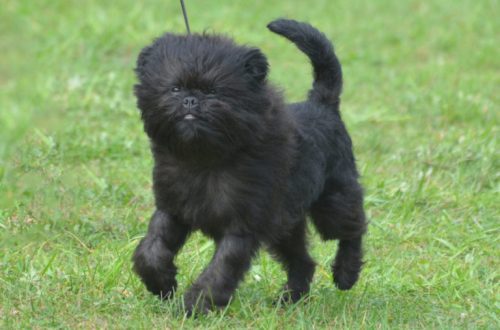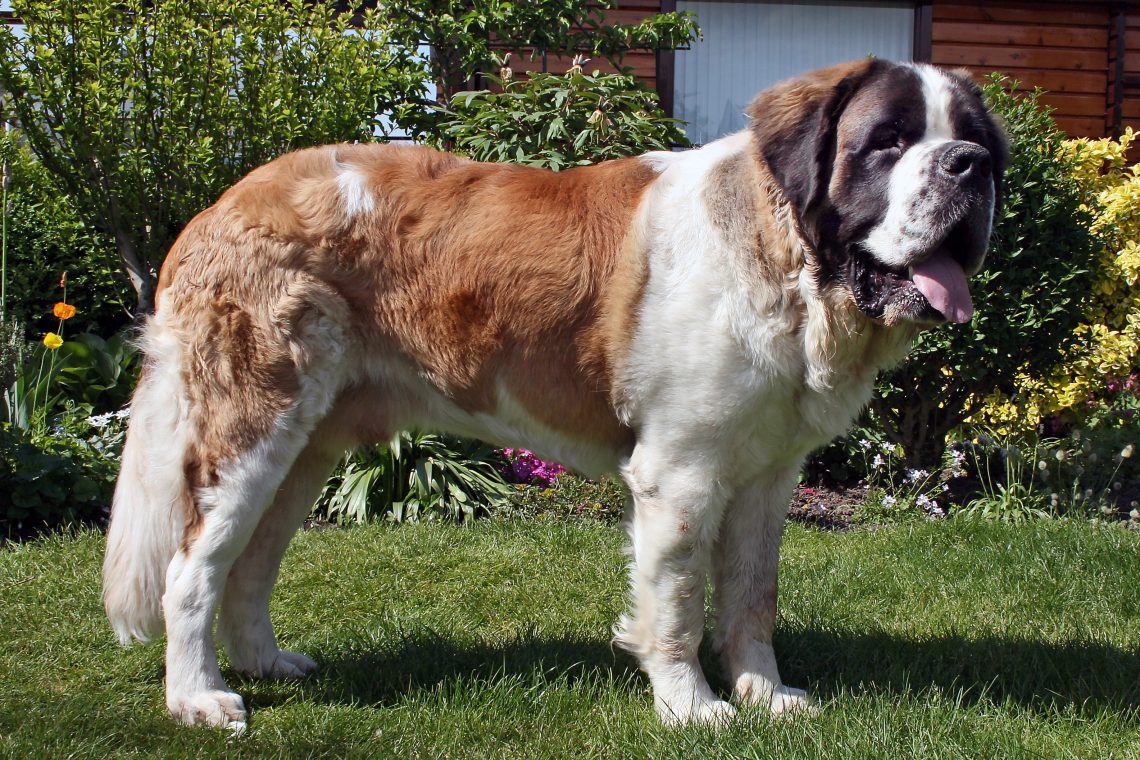
St. Bernard
St. Bernard is a charming giant with a peaceful character and a slightly sad look. It is considered a typical family dog, but with the right training course, it can become an excellent rescuer or watchman. Calm, disciplined, sincerely loves children.
Contents
- Characteristics of St. Bernard dog
- Basic moments
- History of the St. Bernard breed
- Video: St. Bernard
- Appearance of St. Bernard
- Photo of an adult St. Bernard
- St. Bernard character
- Training and education
- Maintenance and care
- Health and disease of St. Bernard
- How to choose a puppy
- Photos of St. Bernard puppies
- How much is St. Bernard
Characteristics of St. Bernard dog
| Country of origin | Italy, Switzerland |
| The size | large |
| Growth | 65 to 90 cm at the withers |
| Weight | 50 to 91 kg |
| Age | up to 9 years |
| FCI breed group | Pinschers and Schnauzers, Molossians, Mountain Dogs and Swiss Cattle Dogs |
Basic moments
- Balanced and good-natured by nature, St. Bernards easily get along with any pets, from cats to feathered pets.
- Rescue dogs love companionship, but are also good at dealing with temporary loneliness, as long as it doesn’t become permanent.
- A characteristic feature of the St. Bernards is intense salivation, so if you are not ready to wipe liquid “traces” from the floor, furniture and household knees, take a closer look at other breeds.
- Adults are moderately playful and love long walks. But intensive cardio loads are only harmful to representatives of this breed.
- Dogs are calm, do not make unnecessary noise and bark only in exceptional cases.
- St. Bernards tolerate moderately low temperatures well and suffer greatly from heat. During the summer months, the animal will need a specially equipped shelter or corner where it can cool off a bit.
- They are well oriented in space and easily find their way home, even if they are in an unfamiliar area.
- St. Bernards are quite loving and equally affectionate towards each member of the family.
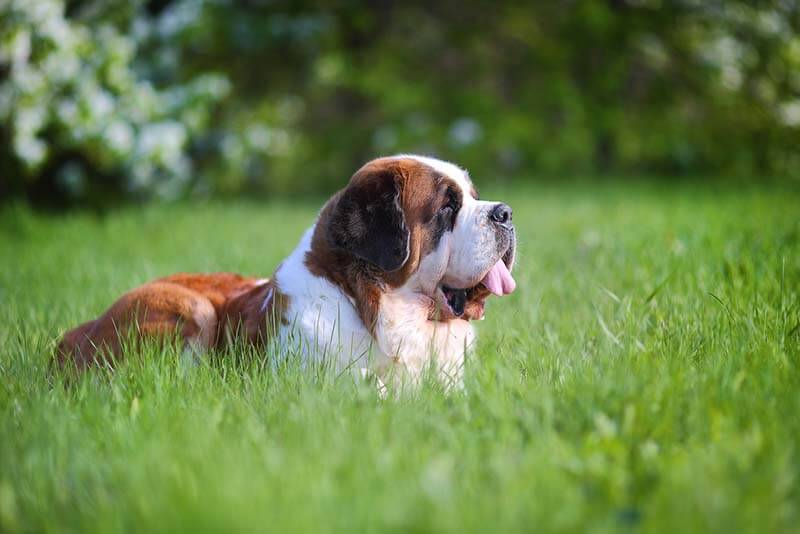
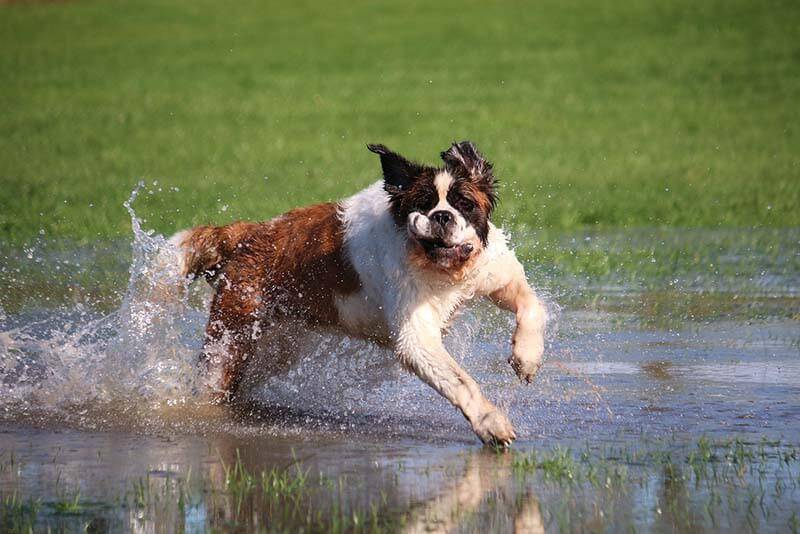
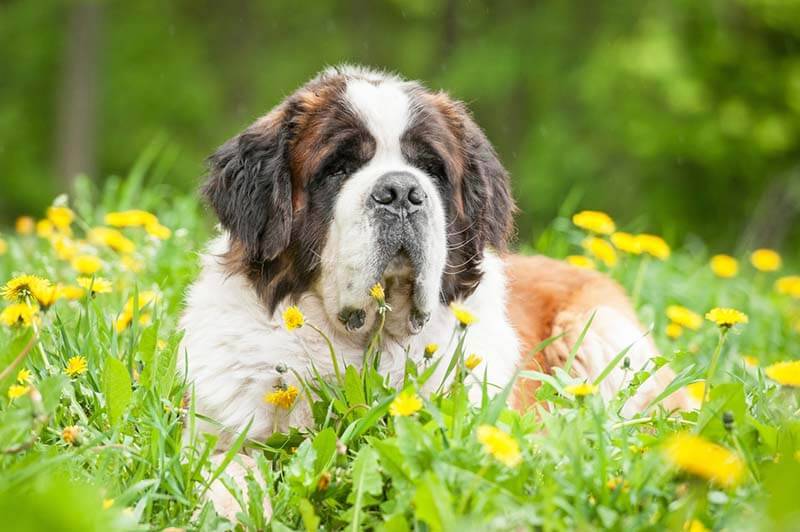
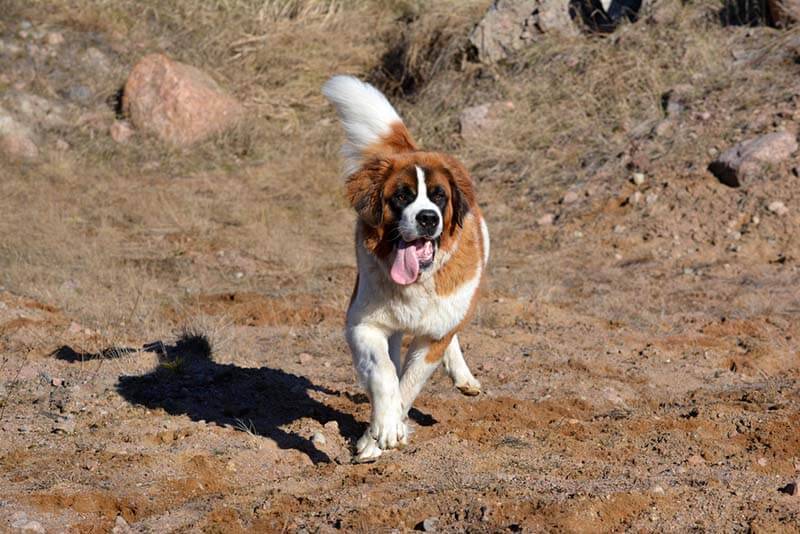
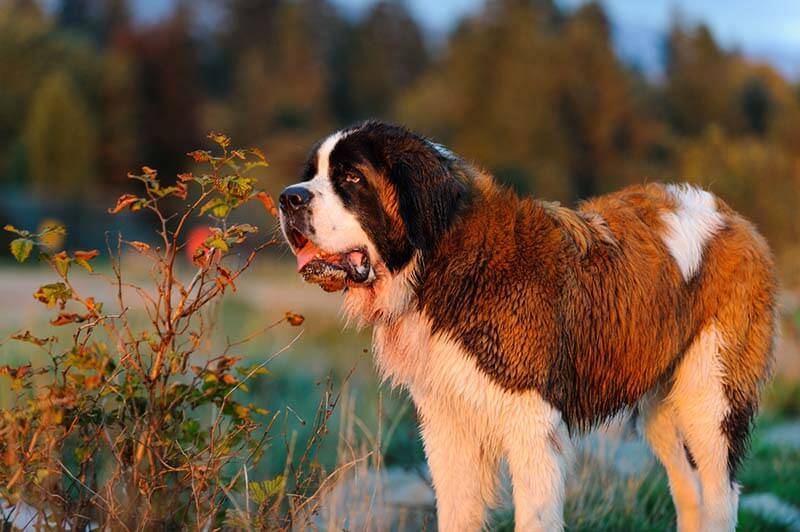
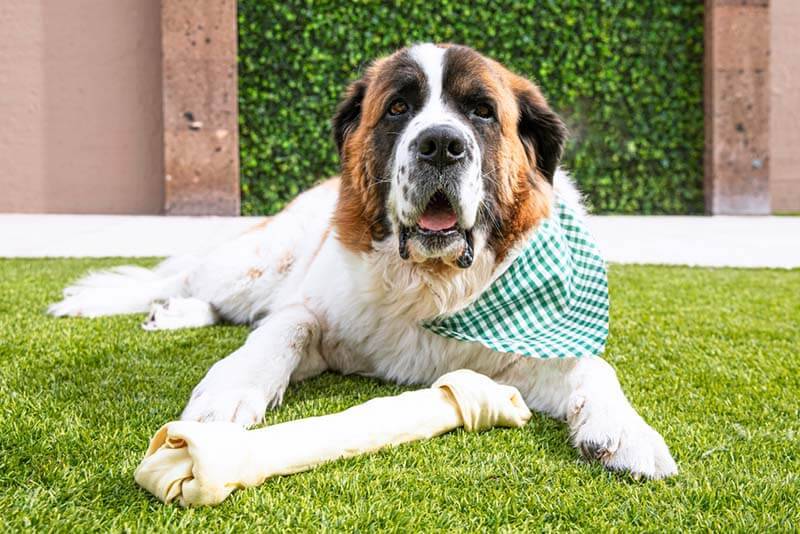
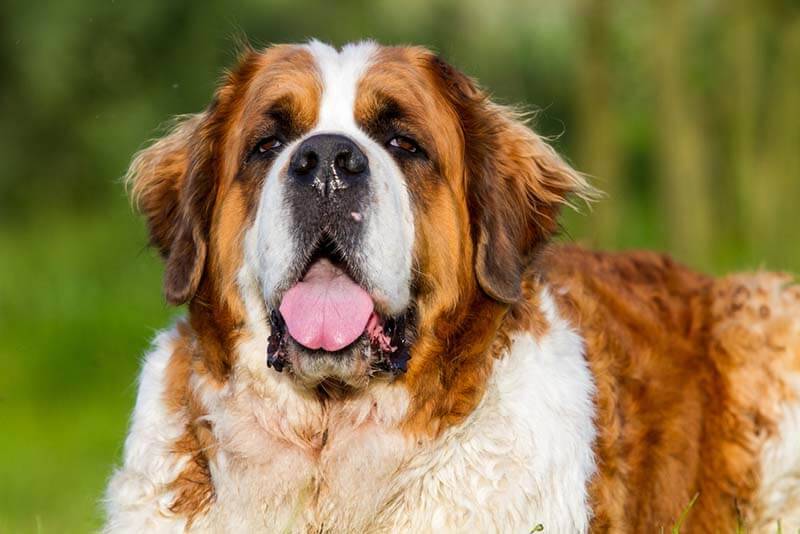
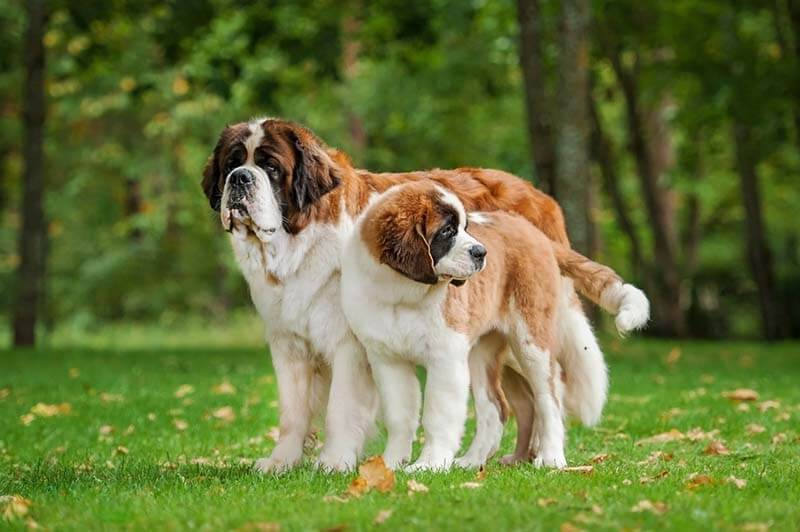
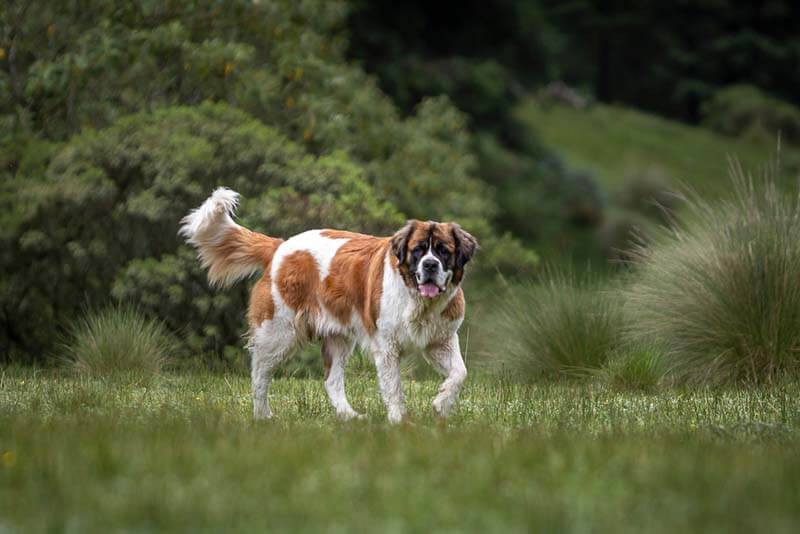
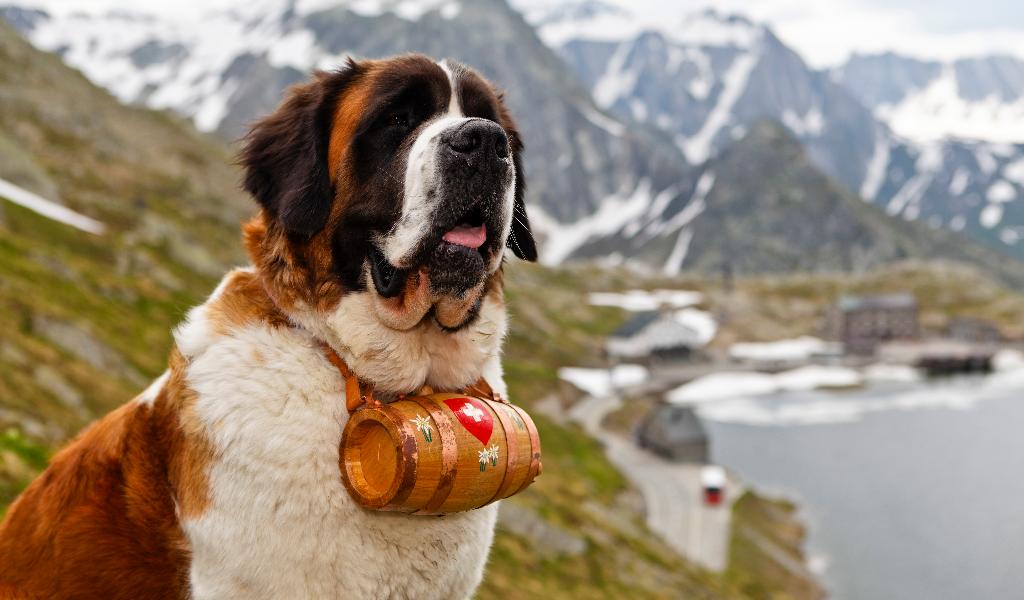
St. Bernards are natives of the Swiss Alps, selfless rescuers of travelers lost in the mountains, known for their phenomenal devotion to man. Serious and collected, these white-red giants are completely devoid of arrogance and the desire to “show off” in front of their relatives. And what’s the point of proving something to someone with such impressive dimensions. St. Bernards feel most comfortable in large friendly families, where they are definitely not threatened by loneliness and lack of communication.
| PROS Get along with other pets if they grew up together; Good nature and complete lack of aggression; Good learning ability; Cold resistance; Huge strength. | CONS Relatively short lifespan hot weather intolerance; The need for regular training from an early age; Profuse salivation. |
History of the St. Bernard breed
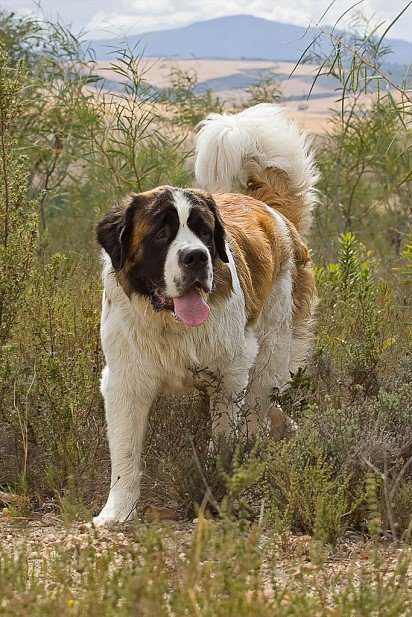
The history of the formation of the breed has its roots in such depth of centuries that specialists can only speculate as to who actually was the ancestor of the rescue dogs. Most modern researchers tend to think that the progenitors of today’s St. Bernards were Tibetan Great Danes – dogs of massive build, settled in the territory of Central and Asia Minor in the 4th century BC. e. Animals came to Europe with convoys of Alexander the Great, who brought them as a military trophy, first to Greece, and then to Ancient Rome. However, some scientists continue to consider St. Bernards as the “product” of mating a mastiff with a mastiff.
As for the name of the breed, the animals owe them to the Catholic saint – Bernard of Menton, who founded a kind of shelter for travelers and pilgrims in the Swiss Alps. The establishment was located on the Great St. Bernard Pass, known for its extreme weather conditions and steep descents. Due to the constant avalanches and crumbling mountain slopes, the trip to the Bernard shelter was a real survival game. As a result: the monks of the local monastery often had to arm themselves with shovels and, instead of prayers and night vigils, go in search of tourists freezing under snowdrifts.
In the 17th century, the first St. Bernards began to be involved in rescue operations, which were bred right at the monastery. The animals had a thick skin, endured cold and had an excellent sense of smell, allowing them not only to smell a person under a snow blockage, but also to predict the next avalanche. In addition, the dogs served as a living heating pad: having dug up the victim, the St. Bernard lay down next to him to warm him up and help him survive until help arrived.
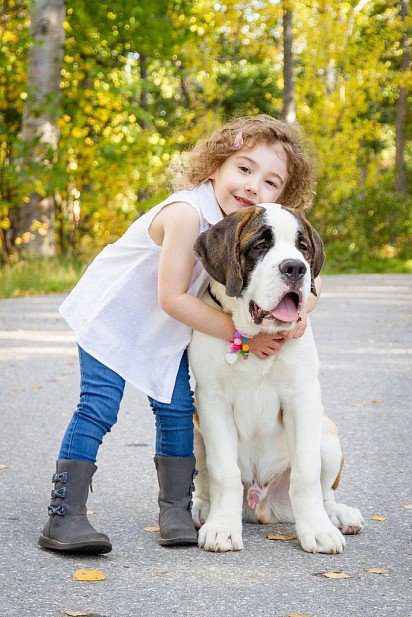
At the beginning of the 19th century, as a result of an unknown infection, most of the dogs in the monastery of St. Bernard died. Fearing the complete disappearance of the breed, the monks decided to “pump” its surviving representatives with Newfoundland genes. However, the experiment was only half successful. The offspring born after such mating looked more impressive due to their shaggy coat, but it turned out to be completely unsuitable for work in the mountains. Snow stuck to the long hair of the mestizos, because of which the “fur coat” of the dog quickly got wet and overgrown with an ice crust. In the end, the monks sent the shaggy St. Bernards to the valleys, where they began to be used as watchmen. Short-haired animals continued to serve on mountain passes.
In 1884, the St. Bernards had their own fan club, whose headquarters was located in Basel, Switzerland. And three years later, rescue dogs were entered into the breed register, and a separate appearance standard was approved for them.
In the 90s, breeders’ interest in St. Bernards began to wane. In the conditions of a sharp change in the political system and a rethinking of the value system, good-natured and sedate giants were no longer quoted. Aggressive bodyguard dogs came into fashion, becoming a symbol of financial independence and assertiveness of their own owners. The gradual revival of the breed began only in 1996, after the founding of the first National Club of St. Bernard lovers. The organization united several smaller clubs, as well as breeding kennels, which set the goal of preserving and improving the breed, and, if possible, regaining its lost popularity.
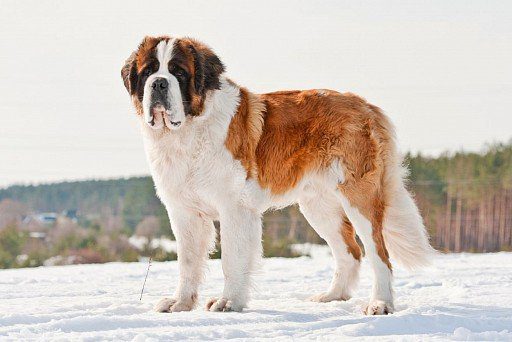
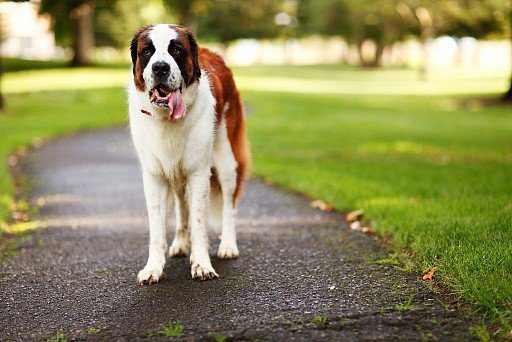
Video: St. Bernard
Appearance of St. Bernard
The brave rescuers from the monastery of St. Bernard had less impressive dimensions than their today’s relatives. As for the complexion of modern individuals, these are real heavyweights with a body weight of 70 kg or more. The height of an adult St. Bernard male can reach 90 cm, females – 80 cm. In addition, these spotted giants have amazing charisma. What is the corporate look worth, in which light melancholy and age-old wisdom of the entire canine family lurk.
Head
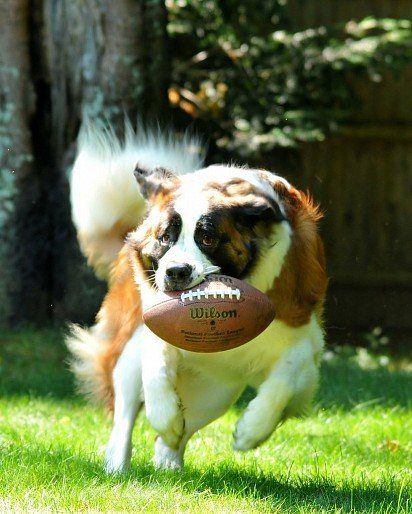

Massive and wide skull of a rounded shape. The cheekbones and superciliary arches are well developed, the occiput is slightly convex. The transition from the forehead to the muzzle is arched and rather steep (pronounced stop). The middle part of the head is crossed by the so-called frontal furrow. Above the eyes there are shallow wrinkles-folds, which become more pronounced if the animal is alert. The muzzle of the St. Bernard is uniformly wide, without narrowing towards the nose. The back of the nose is even, with a barely noticeable groove in the middle.
Nose
The lobe is large, rectangular in shape, color is black. Nostrils are wide and open.
Teeth and jaws
The jaws of the St. Bernard are strong, wide and of the same length. The bite should be scissor or pincer bite (overbite is not considered a serious defect). The absence of first premolars and third molars is allowed.
Lips
The upper lips are tight, fleshy, but not excessively pendulous, the corners are distinct. The edge of the lips is black.
Eyes


Medium, relatively deep set. The eyelids are close to the eyeball, the edges of the eyelids are well pigmented and tightly closed. The look of the St. Bernard is smart, a little sad. The shade of the iris varies from rich brown to hazel. Allowed by the standard: slight drooping of the lower eyelid, showing part of the conjunctiva, as well as insufficient bending of the upper eyelid.
Ears
The ears of the St. Bernard are of medium size, proportional, set wide apart and set high. The shape of the ear is triangular, with a rounded tip. The upper edge of the ear rises slightly, the front touches the cheekbones. The ear cloth is soft, elastic, with developed muscles.
Neck
Long, strong, with a dewlap in the throat.


Frame
Stately, muscular, with pronounced withers and a broad, straight back. The St. Bernard has a strong, harmonious physique. The croup zone is long, without noticeable sloping, smoothly “flowing” into the tail. The chest is deep and spacious. The ribs are moderately curved, without excessive bulge. The lower chest and abdomen are slightly tucked up.
limbs


The forelegs are straight, set wide apart and parallel. The shoulder blades fit snugly to the chest, set at an angle. The shoulders are noticeably longer than the shoulder blades. The humeroscapular angles are not too obtuse. The skeleton of the forearms is strong, the muscles of the dry type.
The hind limbs of the St. Bernard are muscular, with strong, massive thighs, set parallel to each other and at a fairly wide distance. Knee joints with normal angulations: turning neither in nor out. The hocks are strong, have pronounced angles. Paws are large and wide. The fingers are strong, arched, tightly pressed to each other. The dewclaws on the hind feet are not removed unless they interfere with the dog’s movement.
Tail
The tail of the St. Bernard is long, strong, with a massive base. The ideal length is to the hock. In a calm animal, the tail is lowered down, and its tip and the part adjacent to it are slightly bent upwards. In a state of excitement, the tail rises noticeably.
Wool
St. Bernards can be either short-haired or long-haired. The former have a dense undercoat, complemented by a hard and close guard hair. The areas with the longest and thickest hair are the tail and thighs.
The outer hair of long-haired individuals is straight or slightly wavy, reinforced by a thick and dense undercoat. The muzzle and ears are covered with short hair. There are featherings on the front legs, and lush “pants” hide the hips. The hair in the tail area is fluffy and long, the hair in the croup zone is slightly wavy.
Color
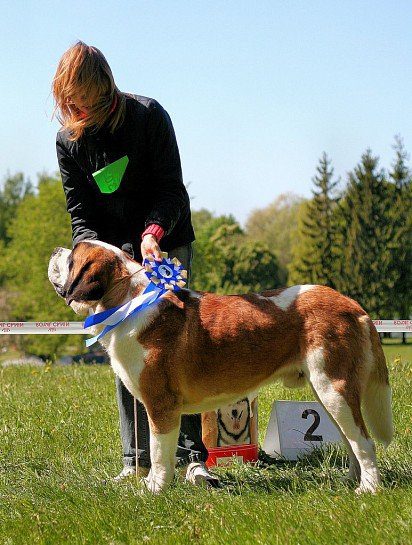

Traditional color options are white with red spots or with a red “cloak” covering the back and sides of the animal. Broken raincoat color (with spots on the red background of the back), as well as yellow and red with brindle are allowed as standard. It is highly desirable that a black edging be present on the dog’s head. Mandatory elements of color: white marks on the paws, chest, tip of the tail; a white blaze on the forehead and a white spot on the nape. At exhibition events, preference is given to individuals with a white “collar” on the neck and a black “mask”.
Disadvantages and possible defects
Puppies with a weakly expressed sexual type, short legs and no white marks in the places prescribed by the breed standard are recognized as defective. St. Bernards with almond-shaped eyes and a light color of the iris, as well as an overly twisted tail thrown over the back, are not very quoted. Curly hair, sagging or, conversely, a hunched back, too obvious folds on the forehead and neck of the breed also do not adorn the breed, although they are not considered a sufficient reason for disqualifying the animal.
As for exhibition commissions, they first of all dismiss indecisive or too aggressive dogs, individuals with a monocolor, as well as those with an incorrect bite, eversion of the eyelids and blue eyes. The reason for disqualification may be the insufficient growth of the St. Bernard, as well as his mental instability.
Photo of an adult St. Bernard


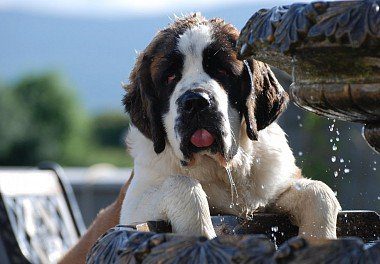

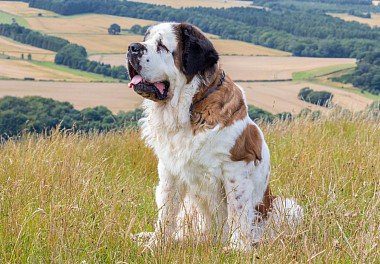



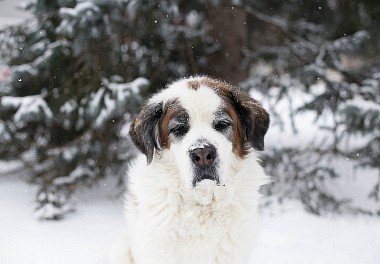

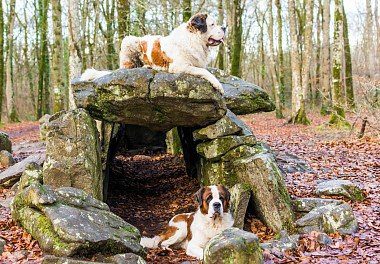

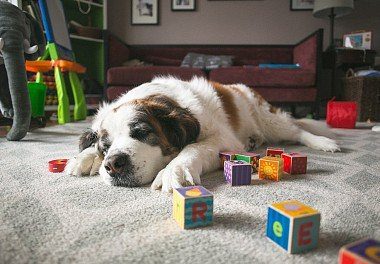

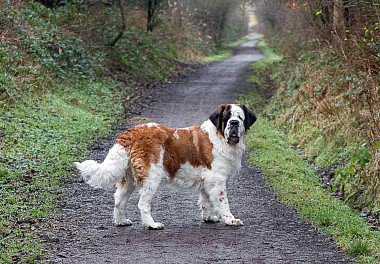



St. Bernard character


St. Bernards make true friends, wonderful watchmen and first-class nannies. In no case do not be fooled by the external detachment of the dog, enhanced by a melancholy look. Representatives of this breed are quite lively and contact creatures who are not alien to either fun or perky games. With age, alpine rescuers accumulate sedateness and phlegm, while young individuals are literally torn apart from an excess of emotions. Not knowing how to express their own affection, young St. Bernards furiously pounce on the owners in an attempt to “acquire” them. From the outside, such a manifestation of feelings looks comical, since a rare person can stay on his feet under the pressure of such a carcass.
As befits a faithful family man, St. Bernard directs all his energy to serve the household. At the same time, he will not download rights and demand close attention to his own person, and he will never respond to annoying children’s pranks with dissatisfied grumbling. Moreover, he will gladly take part in all the “conspiracies” of the kids – remember Beethoven from the Hollywood comedy of the same name? In general, St. Bernards are very calm and unflappable pets, which are unrealistic to piss off. They meet strangers who step on the threshold of the house either friendly or indifferently; they are practically not interested in neighboring cats, as, indeed, in dogs.
A distinctive feature of the character of the St. Bernards is the deep thoughtfulness into which they fall from time to time. It is unlikely that this feature will be eradicated, so take it for granted that sometimes your pet will think about the action for a little longer than it should be. Rest these good-natured giants prefer passive. A St. Bernard lounging on a rug or sofa, as a rule, is in a borderline state between sleep and wakefulness, not forgetting to follow the actions of people along the way. “Calm, only calm!” – this legendary phrase of a prankster with a propeller for the St. Bernards has become something of a life principle, which they try not to change even in the most extreme situations.
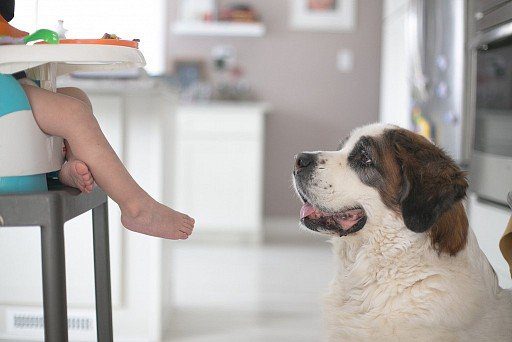

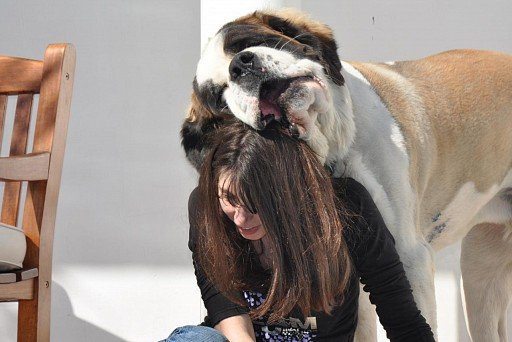

Training and education
St. Bernards are smart students, but in the process of learning they are sometimes hindered by a phlegmatic temperament. If your pet follows the command at a snail’s pace, don’t push it: over time, the animal will definitely “swing” and pick up the necessary speed. Dog training begins from the second or third month of life. By this time, the puppy is already able to learn elementary commands like “Fu!”, “Sit!” and “Lie down!”. The hardest thing for representatives of this breed is fetching, so it is necessary to force the pet to bring objects in the teeth as often as possible.
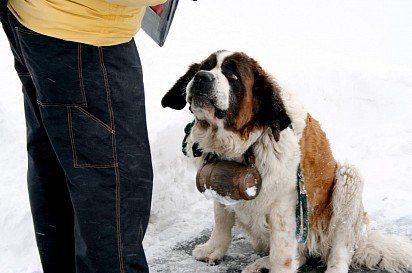

In the process of mastering the basic skills and rules of dog etiquette, the puppy is supposed to be praised and “rewarded” with treats. Never shout or force the animal. If a young St. Bernard loses interest in classes, unfortunately, it will not work to catch up with an adult dog.
By 6 months, the puppy should become intimately familiar with the muzzle. To accustom the dog to this accessory, which is not the most pleasant for her, should be gradual, smoothing out the negative sensations from the muzzle with a small treat.
One-year-old dogs can be involved in full-fledged classes in cynological groups and on sports grounds. This is especially true for owners who see their pet not just as a home bum, but also as a future helper.
Important: as they grow older, St. Bernards gradually lose their ability to learn and are less trainable. The most inconvenient age for training a dog is 2 years or more.
Maintenance and care
The best home for a St. Bernard is a spacious urban or rural cottage with a courtyard and a plot of land. Taking a dog into a small apartment is a bad idea. Due to the lack of free space, the animal will feel constrained and uncomfortable, not to mention the fact that, moving in a limited space, the dog will inadvertently sweep away small objects from any horizontal surfaces. Long-haired individuals can be settled right in the yard, having previously equipped a warm and spacious booth and an aviary for them. For short-haired St. Bernards, the Russian winter can be too severe a test, so it is better to move them to heated rooms for the period of cold weather.


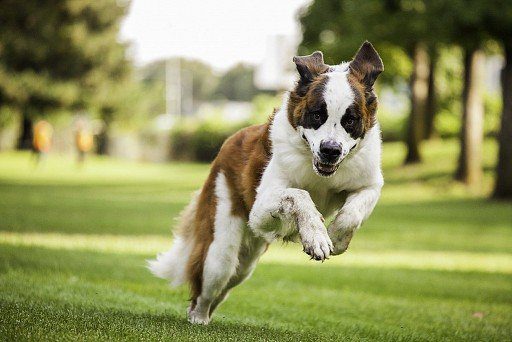

Paddock
Adult animals are allowed to walk in any weather. Ideally, a dog should spend 3 to 4 hours a day outdoors (applies to apartment pets). For puppies, daily promenades are also arranged, but for shorter periods and only on fine days. It is better to start acquaintance with the street with short five-minute exits, further increasing their duration. In addition, babies living in apartment buildings should not be taken out for a walk in the first months of life, but carried out, because due to the constant descents and ascents of the stairs, the animal can earn a curvature of the limbs.
An important point: St. Bernard puppies are contraindicated in excessive physical activity during walking. Long runs and repeated jumps made by the animal can provoke deformation of the joints, as well as cause the formation of incorrect legs.
It is not recommended to walk your pet immediately after eating: the dog should have time for an afternoon rest and normal digestion of food. If the baby is reluctant to go outside, most likely, he simply did not have time to properly rest after the previous walk. In this case, it is better to leave the puppy at home, and postpone the “excursion” for another time. In the summer, St. Bernards suffer from heat, so it is better to walk them before 12 noon or in the evening (after 17:00). It is more expedient to walk kids on a harness with a leather leash. Adults are led out in a collar using a strong one and a half or three meter leash.
Hygiene


St. Bernards shed intensively twice a year. This process is especially rapid in long-haired individuals living in the yard. In pets, wool does not fall out so abundantly, but nevertheless, during the molting period, they also need to be combed out daily with a comb with large teeth. The rest of the time, representatives of this species are combed every 2 days. Short-haired individuals cause fewer problems: during the molting period, a couple of brushings per week are enough for them.
Bathing days for St. Bernards are arranged 2-3 times a year. Groomers recommend that this procedure be timed to the shedding season of the animal in order to wash out the shedding hair and undercoat in this way. At the same time, it is not necessary to close the ears, since they are hanging in the St. Bernards. Be sure to stock up on a neutral shampoo, conditioner, and conditioner to help degrease the coat and make it easier to comb. Wet St. Bernards are dried in two steps: first with a towel, then with a hairdryer. If your pet loves to swim in open water, do not forget to rinse his coat with clean tap water after bathing to wash particles of algae out of it, as well as various unicellular organisms that live in rivers and lakes.
After eating, particles of food remain on the face of the St. Bernard, due to which the white coat in this area may darken. To prevent this from happening, after each meal, wash the dog’s face with warm water and wipe it with a clean rag. If you don’t want the St. Bernard expressing his friendliness to stain your clothes and your guests’ knees with saliva, also take care of a sufficient supply of diapers and napkins.
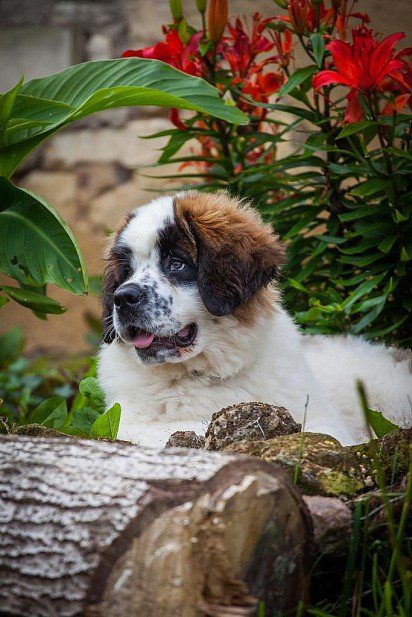

Dog eyes require constant monitoring. Too heavy and drooping eyelids of the St. Bernard do not protect the eyeball from dust and small debris, as a result of which it can become inflamed. You can avoid such troubles by rubbing your eyes daily with a napkin or gauze pad soaked in cold tea or boiled water. By the way, it is not recommended to use cotton wool and discs from it, since cotton microfibers can remain on the mucous membrane of the eye and provoke irritation.
For the prevention of plaque, St. Bernards are given marrow bones and cartilage. If plaque has already appeared, it can be removed with a brush and cleaning compound from a veterinary pharmacy. Once a week, the dog’s ears are examined. If contamination appears inside the funnel, they are removed with a cotton swab or swab dipped in disinfectant lotion or boric alcohol. Wounds and pustules found in the ear must be lubricated with streptocid or zinc ointments. In addition, some veterinarians recommend plucking or clipping the fur in the ear canal to allow better air circulation inside the ear funnel.
Nail clipping is carried out as needed and mainly for elderly or very passive individuals. In dogs that have a regular and long walk, the claw plate wears down on its own. The hair between the fingers of the St. Bernard has the peculiarity of straying into tangles, so it is also cut out. During the summer months and winter, you should carefully inspect the dog’s paw pads. If the skin on them has become too dry and rough, it is useful to lubricate it with a nourishing cream or linseed oil, which will prevent the subsequent appearance of cracks.
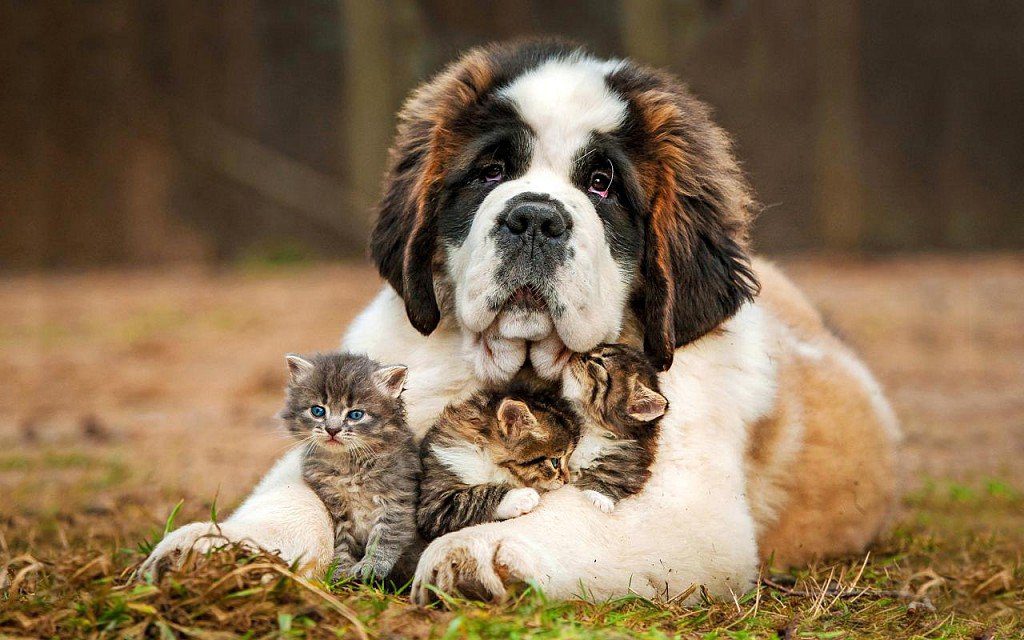

Feeding
In the first days after moving to a new home, the puppy should receive the same food as in the kennel. Products new to the baby are introduced gradually, starting from the third day of stay. Half of the St. Bernard’s diet is protein, that is, lean meat. The daily norm of animal protein for a two-month-old puppy is 150-200 g, for an adult – 450-500 g.
In order to save money, meat can sometimes be replaced with boiled offal. Once a week, it is useful for St. Bernard to arrange a fish day. By the way, about fish: sea fish is considered the safest, although some breeders allow dogs to be given thermally processed river fish.
Can
- Vegetables (carrots, cabbage, beets).
- Egg yolk.
- Butter (in small quantities).
- Garlic (1 clove per week from 3 months of age).
- Milk porridge (rice, oatmeal, buckwheat).
- Seafood and seaweed.
- Brain bones.
- Dairy products.
- Black bread (in the form of a sandwich with butter, but not more than 1 time per week).
It is forbidden
- Beans and potatoes.
- Sweets.
- Spicy and spicy dishes.
- Pickles and smoked meats.
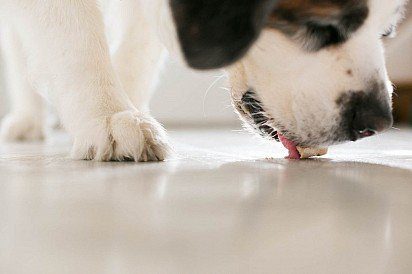

Food in the dog’s bowl should not be too warm or cold: the optimal food temperature for a St. Bernard is 38-40 ° C. If the pet left a little food at the bottom of the bowl, this is a sign that you overdid it with the amount, respectively, the next time the portion should be reduced. For puppies showing greed and increased appetite during meals, it is advisable to increase the number of feedings, while maintaining the same amount of food.
As a source of calcium, it is useful for St. Bernards to give meat bones, chewing which dogs at the same time clean their teeth from plaque. It is necessary to treat the animal with a bone after eating, so as not to provoke constipation. In small puppies, bones are replaced with cartilage.
The vast majority of St. Bernards have a tendency to obesity, so it is very important to build the right diet for the dog and not give in to the momentary desire to once again treat the pet with a treat. Underfeeding is also fraught with health problems, so if the baby licks the bowl for too long and actively after dinner, it is better to give him supplements.
Animals that eat natural products need to be “assigned” from time to time vitamin and mineral complexes like Tetravit, Nutri-Vet and others. As for dry food, it should be selected taking into account the size and age of the pet. For example, varieties for especially large breeds, such as the Rottweiler and Labrador, are suitable for the St. Bernard. An adult animal should consume about a kilogram of “drying” per day.
Health and disease of St. Bernard
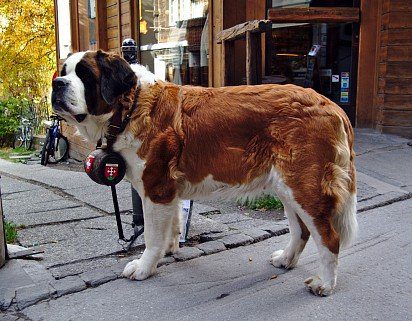

The main scourge of the breed is diseases of the musculoskeletal system, for this reason, St. Bernards often suffer from dysplasia of the hip and elbow joints, dislocation of the patella and osteosarcoma. Of the eye diseases, representatives of this breed are usually diagnosed with inversion / eversion of the eyelid, cataracts and the so-called cherry eye. Congenital deafness is not considered the most common ailment, although hearing-impaired or completely deaf puppies in a litter are not that uncommon. In some individuals, epilepsy, pyoderma, and rupture of the cranial cruciate ligament may occur.
How to choose a puppy
The main difficulty in choosing a St. Bernard puppy is that the breed is not very popular. Accordingly, in search of a reliable breeding nursery, you will have to travel a lot around the country. In such cases, exhibitions provide a good safety net, where you can talk live with breeders, and at the same time evaluate the canine gene pool presented at them.
Otherwise, you should choose a St. Bernard puppy, guided by the same principles as when buying other purebred dogs. Get to know the living conditions of the future pet, as well as his parents. Ask the breeder to test for joint dysplasia on the mother and father of the puppy, which will somewhat reduce the risk of buying a St. Bernard with a hidden defect. Meticulously assess the appearance of the dog: how clean and fluffy her coat is, whether her eyes are watery, whether there are traces of diarrhea under her tail. The paws and back of a healthy baby should be even, and the stomach should be soft and not bloated. The smell from the puppy’s mouth should be neutral.
Photos of St. Bernard puppies


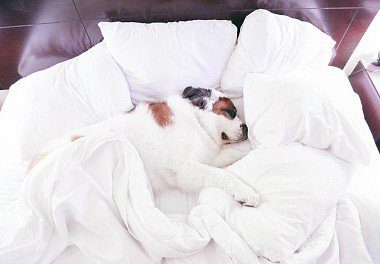







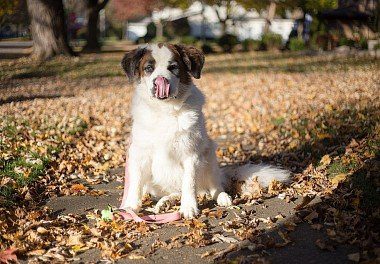

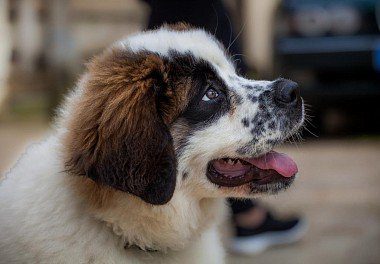



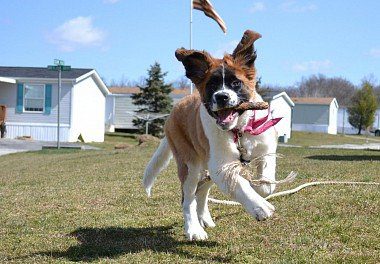

How much is St. Bernard
The average price tag for a St. Bernard puppy in a kennel is 400 – 600$. For this money, the buyer receives a healthy, vaccinated animal with a pedigree, brand and RKF metric. For the future champion and frequenter of exhibitions (show class) you will have to pay at least 800 – 900$. Often on the Internet you can find ads for the sale of grown or completely adult individuals, the owners of which decided to change their place of residence, or were simply disappointed in the breed. The cost of such an animal directly depends on its purebred, as well as the urgency of the sale.





